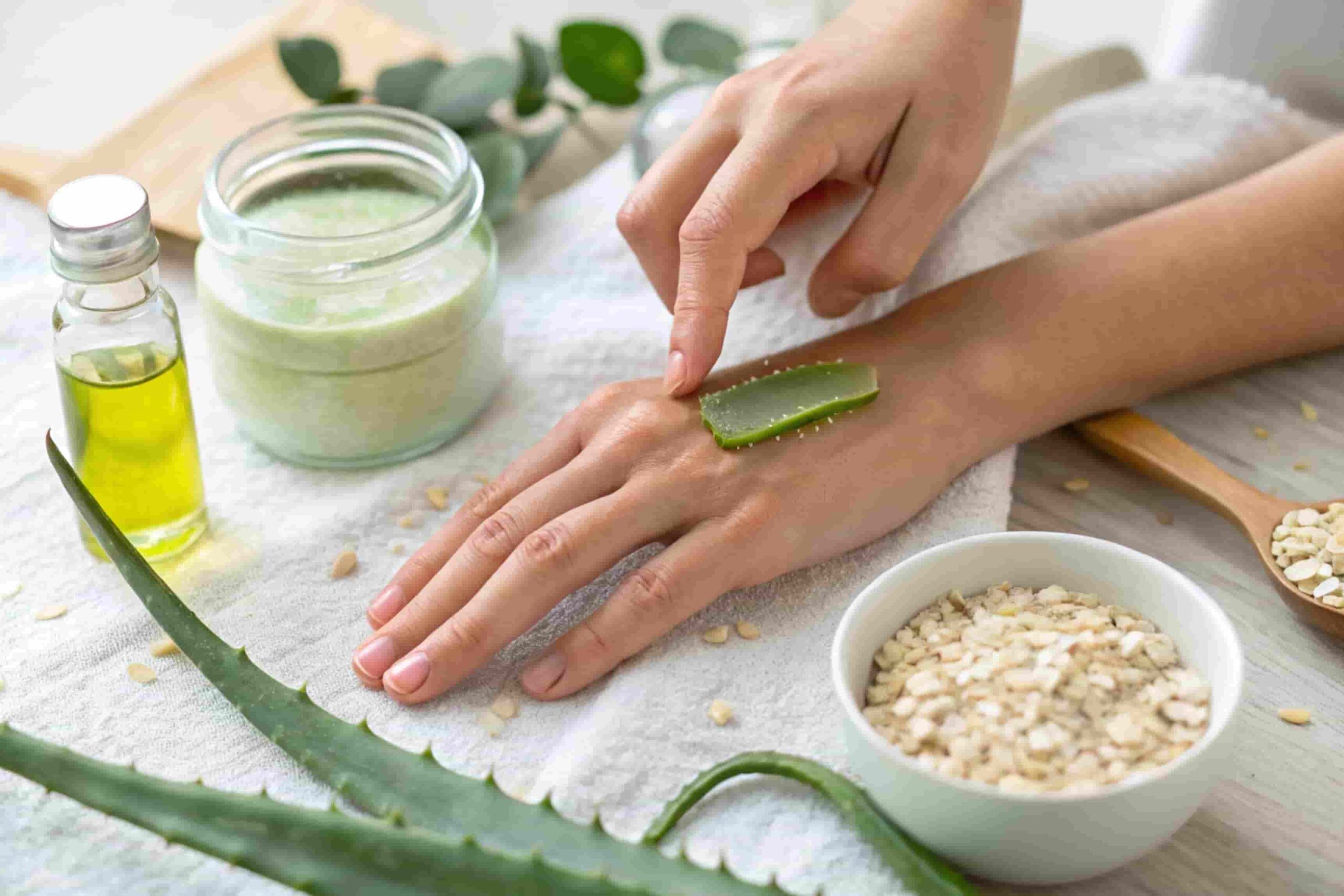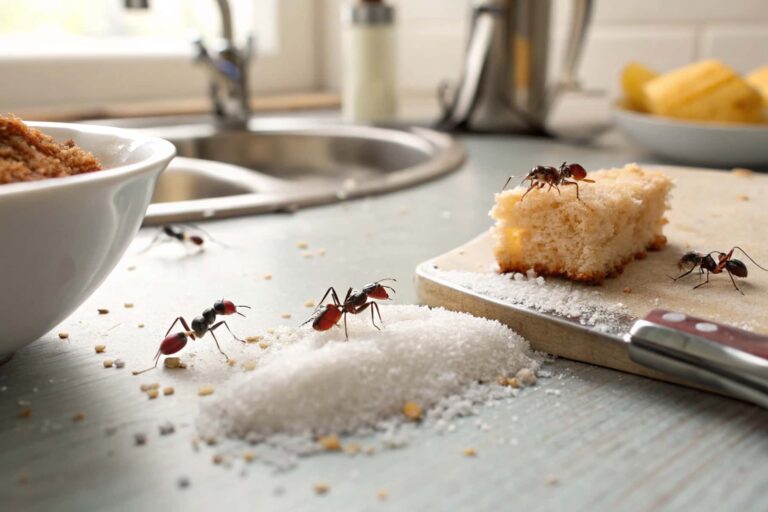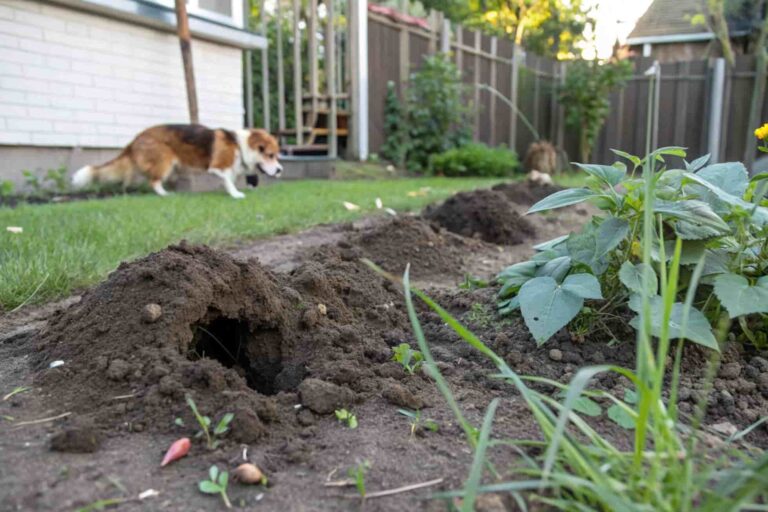Home Health Remedy For Skin Rash – Safe And Easy At-Home Methods!
Skin rashes are a common concern that can lead to itching, redness, and overall discomfort. They often appear unexpectedly due to factors such as allergies, heat, or chronic conditions like eczema. Fortunately, many mild skin rashes can be treated at home using safe and effective natural remedies.
Choosing the right home health remedy for skin rash allows you to soothe irritation without relying on harsh chemicals or costly treatments. As people become more conscious of what they put on their skin, the demand for gentle, plant-based solutions continues to grow.
Backed by both traditional wisdom and scientific support, these remedies are easy to use and often involve ingredients already available at home. They offer a practical and affordable approach to skincare that aligns with a healthier, more natural lifestyle. In this guide, you’ll discover simple, proven remedies designed to naturally calm rashes and restore skin health.
What Is a Skin Rash and Why Does It Happen?
Skin rashes are common and can appear as redness, bumps, inflammation, dryness, or itching on any part of the body. These symptoms are usually signs that your skin is reacting to something, either inside your body or in your environment. Some rashes are caused by allergies, while others may be triggered by skin conditions like eczema, contact dermatitis, or heat exposure.

Rashes can range from mild to severe and may last a few hours to several weeks, depending on the cause and treatment. Luckily, many cases of skin rashes can be treated naturally at home without medications or harsh chemicals. Choosing the right home health remedy for a skin rash can help soothe your skin gently and speed up the healing process.
What Causes Skin Rashes at Home?
Before choosing a remedy, it’s important to understand the cause of the rash. Identifying the trigger can help you treat it effectively and prevent future flare-ups.
Common Home Triggers Include:
- Harsh personal care products: Soaps, detergents, shampoos, or lotions with strong fragrances, sulfates, or preservatives can strip the skin’s natural oils, causing dryness, irritation, and allergic reactions, especially in people with sensitive skin.
- Excessive heat or sweating: Prolonged exposure to heat or heavy sweating can block pores, leading to heat rash or irritation in areas like underarms, neck, or thighs, especially during summer or while wearing tight clothing.
- Seasonal changes or dry indoor air: Transitioning between weather conditions or using indoor heating or cooling systems can lower humidity levels, leaving the skin dry, cracked, and more prone to inflammation, flaking, and itchy rashes.
- Allergies to foods, fabrics, or plants: Certain foods, synthetic fabrics, or indoor plants like poison ivy or even pet dander can trigger allergic skin reactions, resulting in redness, hives, or raised patches that appear suddenly or over time.
- Underlying skin conditions: Chronic issues such as eczema, psoriasis, or fungal infections can flare up due to stress, environment, or improper skincare, causing recurring rashes, dryness, and discomfort if not properly managed or treated.
If your rash is mild and not rapidly spreading, home treatment is often sufficient. However, for ongoing, painful, or worsening rashes, it’s wise to consult a doctor.
How Can a Cold Compress Help Reduce Skin Irritation?
Using a cold compress is one of the quickest and simplest ways to relieve itching, swelling, and redness caused by rashes. Cold temperatures help calm inflamed skin, making it especially useful for heat rashes, allergic reactions, or insect bites. To use, soak a clean washcloth in cold water, wring out the excess, and place it gently on the affected area for 10–15 minutes.
Repeat this process 2–3 times a day. You can also use an ice pack wrapped in a towel—never apply ice directly to the skin. This method is safe for both adults and children and can offer instant comfort without any side effects. For added relief, try pairing it with a light, natural moisturizer after use.
Why Is an Oatmeal Bath So Good for Rashes?
Colloidal oatmeal is rich in antioxidants and anti-inflammatory compounds, making it a gentle yet effective home remedy for various skin rashes. It helps reduce itching, redness, and dryness while supporting the skin’s natural barrier.
Key Benefits of an Oatmeal Bath:
- Relieves itching and irritation: Oatmeal soothes the skin by forming a protective layer that locks in moisture and calms inflamed areas, offering quick relief from discomfort caused by eczema, allergies, or heat rashes.
- Reduces redness and inflammation: Its anti-inflammatory properties help minimize swelling and redness, making it ideal for sensitive skin or conditions like contact dermatitis and psoriasis.
- Restores the skin barrier: Oatmeal enhances hydration and improves the skin’s ability to retain moisture, which is essential for healing dry, cracked, or damaged skin from prolonged irritation.
- Safe for all ages and skin types: It’s gentle enough for babies, children, and adults, including those with highly sensitive skin, and is often recommended by dermatologists for at-home rash treatment.
- Easy to prepare at home: Simply grind 1 cup of oats into a fine powder, add to lukewarm bathwater, soak for 15–20 minutes, then pat dry and moisturize for lasting relief.
How Does Aloe Vera Help Heal Skin Rashes?
Aloe vera is a widely trusted natural remedy known for its soothing, anti-inflammatory, and antibacterial properties, making it highly effective for healing skin rashes. It helps reduce redness, calm irritation, and promote skin hydration, especially in cases of allergic reactions, heat rashes, or eczema. To use it, simply cut a fresh aloe leaf and apply the gel directly to clean skin. Use twice daily for best results.
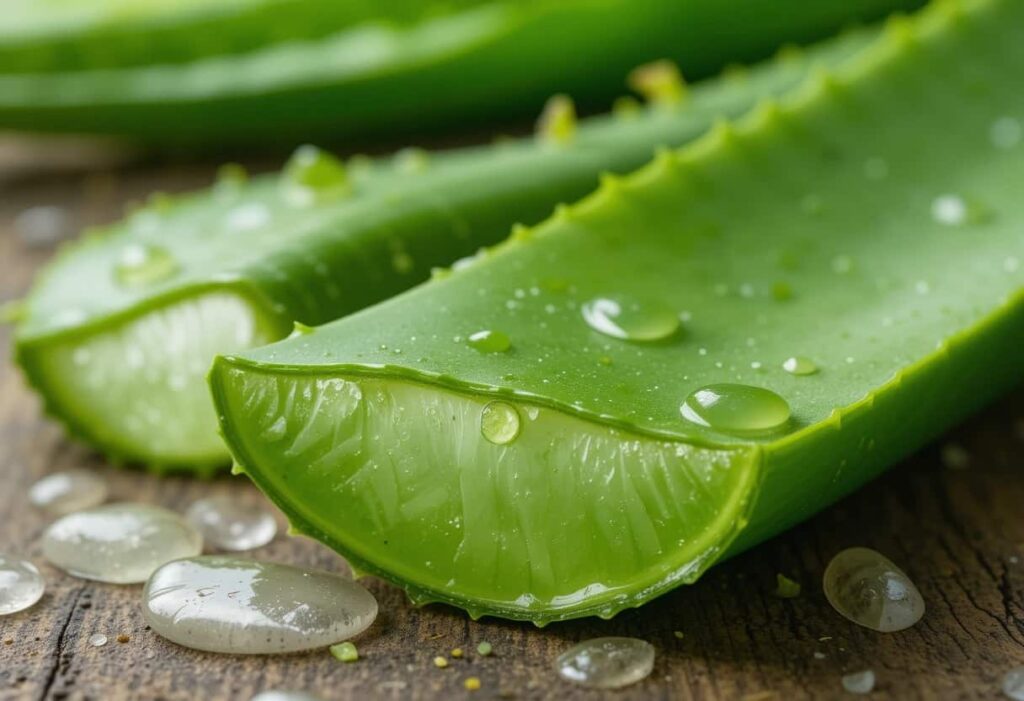
If fresh aloe isn’t available, opt for 100% pure aloe vera gel, and always perform a patch test before full use. Regular use can speed up healing and prevent further dryness or peeling. Store aloe gel in the refrigerator for an added cooling effect.
Can Coconut Oil Soothe Itchy and Dry Rashes?
Virgin coconut oil is a natural emollient packed with medium-chain fatty acids, especially lauric acid, which help restore moisture, reduce inflammation, and protect the skin from bacterial infections.
Key Benefits and Usage Tips:
- Deeply moisturizes dry skin: Coconut oil penetrates deeply into the skin, locking in moisture and preventing dryness that often worsens rashes, especially in cases of eczema or winter irritation.
- Reduces itching and redness: Its anti-inflammatory properties help calm irritated skin, relieving the constant urge to scratch and allowing the skin time to heal naturally.
- Supports skin healing: The antimicrobial nature of coconut oil protects damaged or sensitive skin from secondary infections while promoting faster recovery of inflamed areas.
- Simple and safe application: Gently massage a small amount of virgin (unrefined) coconut oil onto clean, dry skin twice daily for the best results and long-lasting comfort.
- Not for weeping or infected rashes: Avoid using coconut oil on rashes that are oozing, crusted, or infected, and always perform a patch test to rule out coconut allergies.
How Does Aloe Vera Help Heal Skin Rashes?
Aloe vera is a widely trusted natural remedy known for its soothing, anti-inflammatory, and antibacterial properties, making it highly effective for healing skin rashes. It helps reduce redness, calm irritation, and promote skin hydration, especially in cases of allergic reactions, heat rashes, or eczema. To use it, simply cut a fresh aloe leaf and apply the gel directly to clean skin.
Use twice daily for best results. If fresh aloe isn’t available, opt for 100% pure aloe vera gel, and always perform a patch test before full use. Consistent application can speed up skin regeneration and prevent further flare-ups. For added relief, store the gel in the refrigerator to enhance its cooling effect.
How Does Baking Soda Help Soothe Skin Rashes?
Baking soda is a natural and affordable remedy known for its ability to relieve itching and restore the skin’s natural balance.
Key Benefits and Usage Tips:
- Balances skin pH: Baking soda helps maintain the skin’s ideal pH level, which can be disrupted by irritants or allergens. A balanced pH supports the skin’s natural barrier and reduces inflammation and redness.
- Relieves itching from mild rashes: Its alkaline nature can neutralize irritants on the skin’s surface, reducing the urge to scratch. This makes it useful for insect bites, allergic reactions, or contact with plants like poison ivy.
- Paste method for targeted relief: Create a thick paste using baking soda and a small amount of water. Apply directly to the rash, leave it on for 10–15 minutes, then rinse off gently and pat the area dry.
- Soothing bath method: For widespread rashes, add 1 cup of baking soda to a warm bath and soak for 15–20 minutes. This helps calm irritated skin and provides full-body relief from discomfort or itchiness.
- Follow with a moisturizer: After rinsing, always apply a fragrance-free or natural moisturizer. Baking soda can dry out over time, so replenishing moisture helps maintain skin softness and supports the healing process.
Is Apple Cider Vinegar a Safe Rash Treatment?
Apple cider vinegar is a popular natural remedy known for its ability to reduce itching and fight infection, especially in fungal or yeast-related rashes.
Key Benefits and Usage Guidelines:
- Offers natural antimicrobial protection: Apple cider vinegar contains acetic acid, which has antibacterial and antifungal properties. It can help prevent infection and promote healing when used appropriately on clean, unbroken skin.
- Reduces itching and irritation: ACV can soothe itchy or inflamed areas by restoring the skin’s natural pH balance. It’s particularly effective for scalp rashes, fungal irritation, or rashes triggered by sweat buildup.
- Simple dilution for safe use: Mix one part apple cider vinegar with three parts water. This dilution is gentle enough for most skin types and prevents stinging or irritation that may occur from undiluted vinegar.
- Effective spot treatment method: Use a clean cotton ball or pad to dab the diluted solution onto the affected area. Let it sit for about 10 minutes before rinsing it off with cool water and drying gently.
- Avoid on open or broken skin: Never apply ACV to cracked, bleeding, or severely irritated skin. It can cause stinging and may worsen the condition. Always do a patch test before full application to ensure skin compatibility.
Can Epsom Salt Baths Reduce Inflammation?
Epsom salt baths are a simple yet effective remedy for soothing irritated or inflamed skin. Rich in magnesium sulfate, Epsom salts help reduce inflammation, ease itching, and relax tense muscles, making them ideal for rashes caused by sweat, stress, or dryness. To use, add 2 cups of Epsom salt to a warm bath and soak for 15–20 minutes.
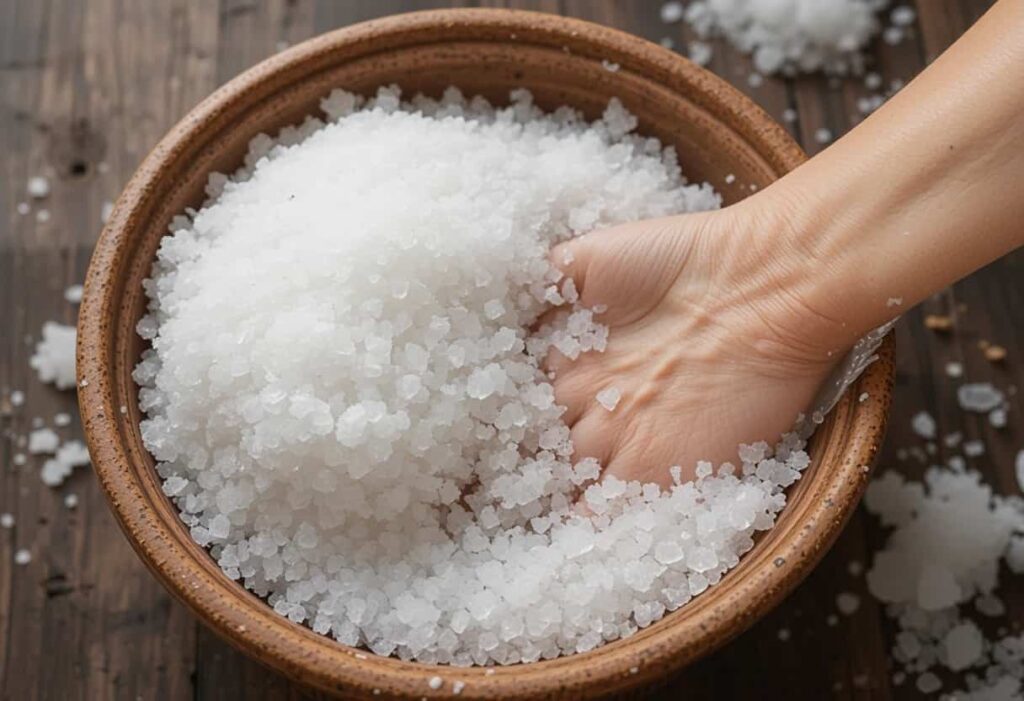
After soaking, gently pat the skin dry and apply a light, fragrance-free moisturizer to lock in hydration. This treatment supports both skin recovery and full-body relaxation with minimal effort. For added benefit, try using Epsom salts two to three times per week. Always consult a doctor before using salt baths for children or sensitive skin types.
What Herbal Remedies Work for Skin Rashes?
Herbal remedies have been used for centuries to relieve skin irritation, redness, and inflammation. Many of them are available in the form of creams, oils, teas, or homemade pastes.
Popular Herbal Remedies Include:
- Calendula: Known for its anti-inflammatory and antibacterial properties, calendula helps reduce swelling and speed up skin healing. It’s commonly used in creams and ointments for treating eczema, burns, and minor skin rashes.
- Chamomile: This gentle herb calms redness, itching, and swelling. It’s safe for sensitive skin and can be used as a tea compress or infused into oils for topical use on irritated or inflamed areas.
- Turmeric: Rich in curcumin, turmeric is a powerful anti-inflammatory that can reduce rash-related swelling. It’s often used as a paste or mixed with oils to soothe skin flare-ups caused by eczema or allergies.
- Licorice Root: Used in many eczema creams, licorice root has skin-calming compounds that help reduce redness and itching. It can be applied as a gel or infused into creams to support rash healing.
- Safety Note: Herbal remedies may interact with medications or cause reactions. Always consult your doctor before using them, especially during pregnancy, breastfeeding, or if you have sensitive or allergy-prone skin.
How Can I Prevent Skin Rashes from Coming Back?
Preventing skin rashes is often easier than treating them, especially when they’re triggered by everyday habits. Start by using fragrance-free soaps and detergents to avoid harsh chemical reactions. Keep your skin hydrated from the inside out by drinking plenty of water and eating a nutrient-rich, skin-friendly diet.
Moisturize daily, particularly during dry or cold seasons, to maintain a strong skin barrier. Avoid scratching or using abrasive exfoliants on sensitive areas. Lastly, wear loose, breathable clothing to reduce friction and heat buildup that can trigger irritation. Regularly clean bedding and clothing to remove allergens and manage stress levels, as emotional stress can also lead to flare-ups.
When Should I See a Doctor About a Rash?
While home remedies are effective for many mild rashes, some symptoms require medical attention. If a rash spreads quickly, becomes painful, or shows signs of infection like blisters, pus, or peeling skin, it’s important to consult a doctor. You should also seek help if the rash is accompanied by fever, swelling, or doesn’t improve after 5–7 days of home care.
A healthcare provider can determine the underlying cause and recommend the right treatment, especially in cases involving allergies, chronic skin conditions, or unknown triggers. Early diagnosis can help prevent complications and ensure faster healing. Never delay medical care if the rash is affecting your breathing, vision, or daily activities.
Faqs:
1. Can I use home remedies on a rash caused by a new skincare product?
Yes, discontinue the product immediately and try soothing remedies like aloe vera or an oatmeal bath. These can reduce inflammation and calm the skin. If the rash worsens or lasts longer than a few days, consult a dermatologist for proper evaluation.
2. Are there any natural remedies that work well for rashes on the face?
For facial rashes, gentle treatments like chilled chamomile tea compresses, fresh aloe vera gel, or diluted apple cider vinegar work well. Avoid harsh oils or essential oils, as facial skin is delicate and may react to strong ingredients even in natural remedies.
3. Can diet changes help reduce recurring skin rashes?
Yes, improving your diet can support skin health. Anti-inflammatory foods like leafy greens, fatty fish, and turmeric can help, while avoiding processed foods or allergens like dairy or gluten may reduce rash flare-ups linked to sensitivities or inflammation.
4. Is honey safe to use on a skin rash?
Raw honey has antibacterial properties and can help soothe dry, itchy rashes. Apply a thin layer to clean skin, leave it on for 15–20 minutes, and rinse gently. Avoid using it on broken skin or in children under one year old.
5. How can I tell if my rash is fungal, allergic, or something else?
Fungal rashes often appear as red, ring-like patches in moist areas. Allergic rashes usually arise suddenly with intense itching. If symptoms are unclear or worsening, it’s best to consult a healthcare provider for an accurate diagnosis and appropriate treatment plan.
Conclusion:
Taking care of your skin doesn’t always require expensive treatments or medications—sometimes the best solutions are already in your kitchen or bathroom cabinet. From soothing oatmeal baths and aloe vera to the gentle power of coconut oil and baking soda, each home health remedy for skin rash offers a safe, natural way to calm irritation and support healing.
By understanding your skin’s triggers and choosing the right remedy, you can manage rashes effectively and maintain healthy, comfortable skin the natural way. Always be patient with the healing process, and if symptoms persist, seek professional medical advice. Consistency and gentle care are key to long-term skin health.
Related post:
